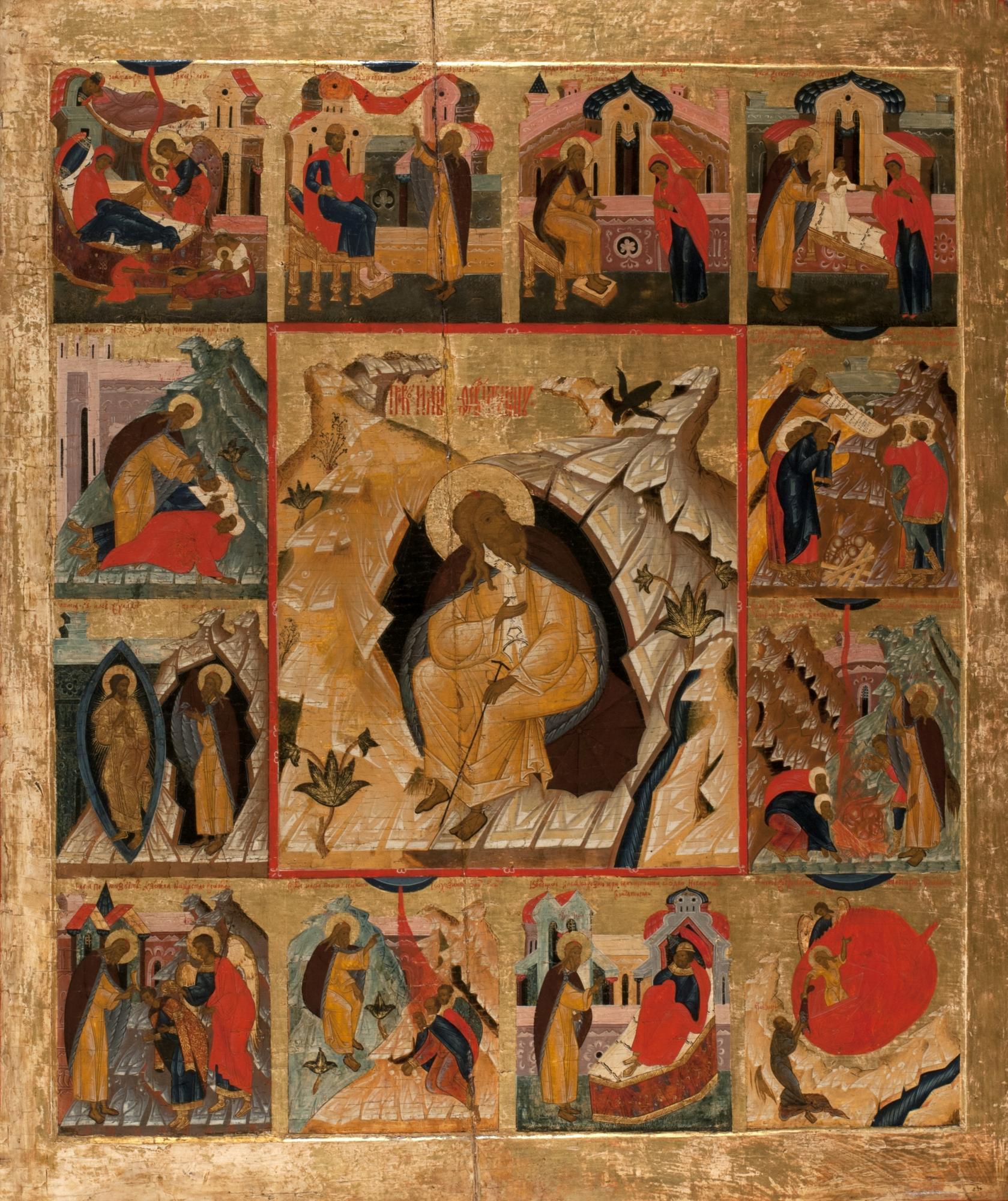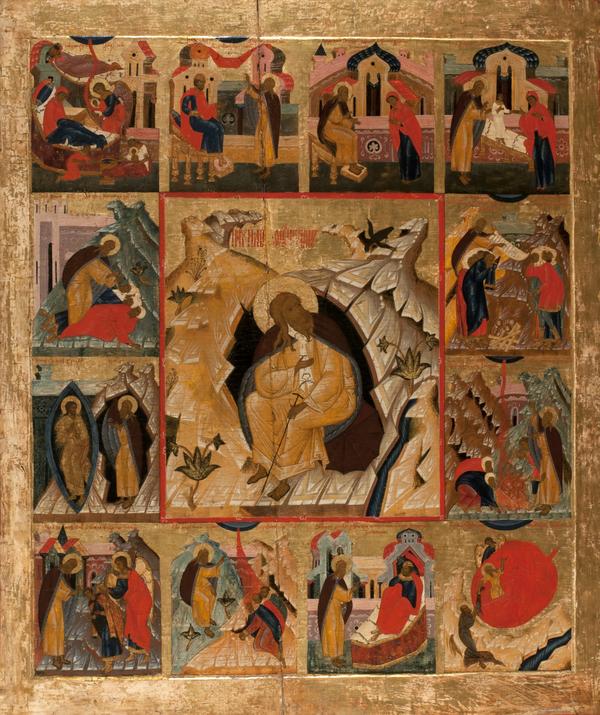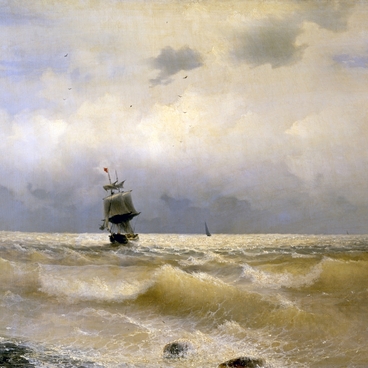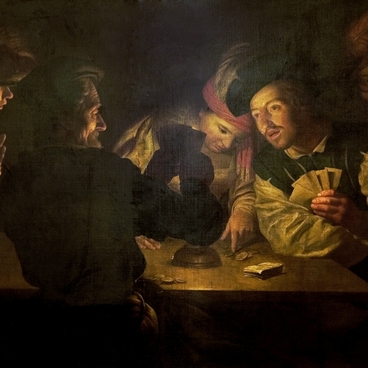This icon Prophet Elijah in the Desert was painted in the XVI century. It belongs to the hagiographical genre and narrates the life path of the saint. A similar type of images was found in the Eastern Roman Empire, but its spread was the widest in Slavic countries, including Ancient Rus. The period this specific icon from the Radishchev Museum belongs to was at the peak of this genre’s popularity.
Prophet Elijah in the desert, with life episode
Время создания
XVI c
Размер
112x92 cm
Техника
Tempera on wood
Коллекция
3
Открыть в приложении#3
Unknown author
Prophet Elijah in the desert, with life episode
#2
#4
A hagiographical icon has the central field, its centerpiece showing the saint, and border scenes in the form of small rectangular episodes depicting the most important moments of the saint’s life. The border scenes are arranged chronologically, left to right, and their number can differ from icon to icon.
#6
In this icon, Prophet Elijah the Desert, there are twelve border scenes narrating the twelve episodes of the saint’s life starting from birth in the upper left rectangle, to his ascension to Heaven in the lower right corner.
#7
Saint Elijah was one of the most revered Old Testament prophets in Ancient Rus. Little is known of his provenance, not even his name. Elijah translates from biblical Hebrew as My God Yahve.
#8
In the icon the saint is painted in pursuance of the Canon. Elijah’s ponderous figure, the way he turns his head, and his soft and smooth features are the canonic features the image must follow. In showing the world around the saint, the icon painter stuck to the rules of the Canon, too. The prophet was frequently painted sitting by a creek, or at the backdrop of mountains and schematic trees.
#9
To create the festive sensation, the artist painted the intricately ornamented architectural elements, brightly colored garments, and used a lot of gold and red on the icon.
#10
Elijah openly criticized the King of Israel and his spouse for their adherence to pagan traditions. To punish them for their lack of faith, God sent catastrophic drought onto Israel that lasted for three years. The prophet retrieved to the desert and found himself a short distance from a body of water and was fed by trained ravens. In the centerpiece, the painter shows that very period, and the prophet is a hoary old man by the side of the Chorave source with some mountains at the background. The gold and ocher of the centerpiece relay the feeling of intolerable heat and wild desert.
#11
When the people of Israel were exhausted by the drought, Elijah approached locals with a trial. He set up two sacrificial altars, one for the pagan god, and the other Christian God, and said: Whose sacrifice is to be hit by fire from heavens, their God is true, and all shall worship him. God accepted the sacrifice, and after the prophet’s ardent prayer God sent rain to the Earth. Those are the episodes in border scenes five and six.
#12
After that, the people of Israel turned away from their pagan beliefs towards Christian God. For his feat in the name of God and his holy life, Elijah entered heaven alive.
#13
A.N. Radishchev Saratov State Museum of Fine Arts
читать дальшескрыть
00:00
00:00
1x
Prophet Elijah in the desert, with life episode
Время создания
XVI c
Размер
112x92 cm
Техника
Tempera on wood
Коллекция
3
Открыть в приложении
Поделиться



